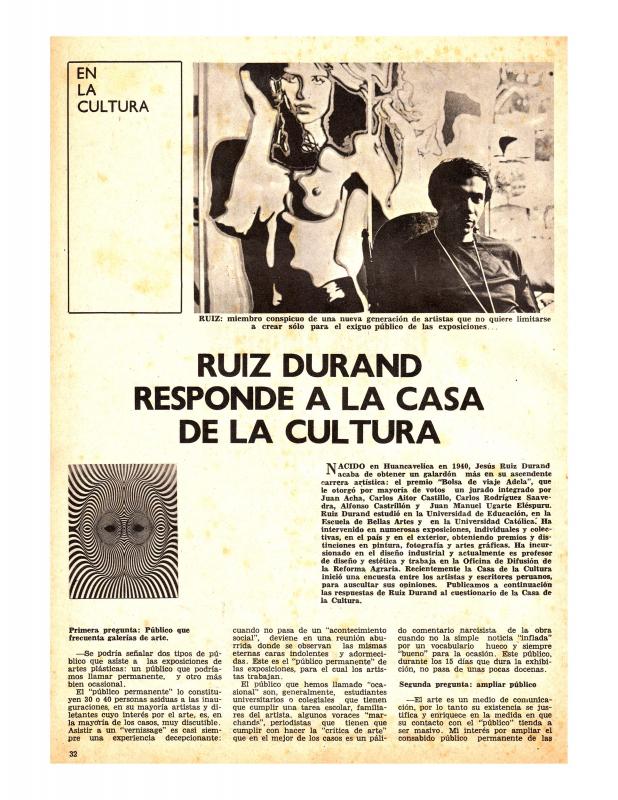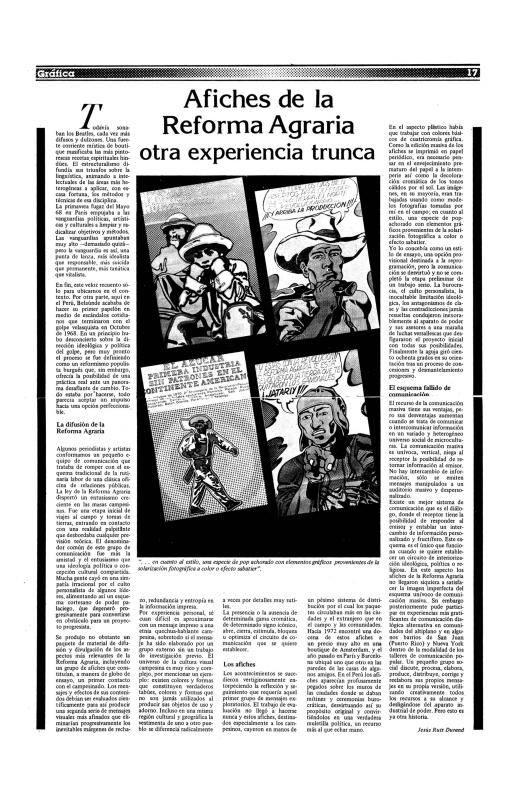In this brief period piece, the critic Alfonso Castrillón (Lima, b. 1935) looks ahead; 1975 was when the Velasco regime was brought down by a coup at a time of disloyalty among the military, when posters and prints were still not accepted (in Peru) as a form of artistic expression [on that subject, see in the ICAA digital archive by Jesús Ruiz Durand “En la cultura: Ruiz Durand responde a la Casa de la Cultura” (doc. no. 1141409)].
In addition to the critical review of the graphic work produced by José Bracamonte (1928–83), the document includes two other excerpts from critiques by José Flores Araoz and Juan Acha (1916–95), from the Primer Salón de Artes Plásticas de la Universidad de San Marcos (1951) and the Segundo Salón de Arte Gráfico (1963), respectively, where Bracamonte’s work is mentioned.
The graphic designer José Bracamonte [Vera] was one of a group of artists and intellectuals who were involved in the cultural policies of the Gobierno Revolucionario de las Fuerzas Armadas Peruanas, during its first phase (1968–75) under the leadership of General Juan Velasco Alvarado (1910–77). Bracamonte was actively involved in SINAMOS (Sistema Nacional de Apoyo a la Movilización Social)—the regime’s agency for advancing its social reforms—where he worked with this influential propaganda machine inspired by other political uses of the image, as in Cuba. Bracamonte worked with artists such as Luis Arias Vera (1932–2016) and Jesús Ruiz Durand (b. 1940) to produce Pop and Op Art silkscreen prints that were circulated among rural populations, which is where the origin of the term “pop achorado” derived and that was suggested some years later by Ruiz Durand [see by Jesús Ruiz Durand “Afiches de la Reforma Agraria: otra experiencia trunca” (doc. no. 1139386)].


